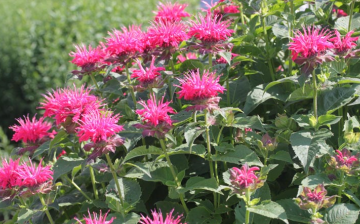Monarda hybrid - a stately girl, prominent
Looking at the slender bright flowers of the monarda, it is hard to believe that this is the same bergamot that refreshes the taste of black tea. But the way it is, this is the favorite drink of Peter the Great and many people around the world from ancient times to the present day. Naturally, not every variety is suitable for this purpose. There are many hybrids created specifically for decorative purposes.
It is difficult to walk past the monarda in the garden without noticing it. It is all fragrant, from the roots to the petals on the inflorescence. A tall perennial can have stems up to a meter in height. A variety of colors will delight the most sophisticated flower growers. In various floristic compositions, with stones and other plants shading it, the hybrid monarda looks presentable and even somehow proudly.
Growing this flower is not difficult at all. It is undemanding to the soil - almost any garden one will do. The main thing is that it is not very acidic and retains moisture. You should also not overshadow the monard. She still prefers the sun or light partial shade. In drought (which is absolutely natural), moderate watering is required. The plant is responsive to organic fertilizers, although it can do without them.
The flower propagates by segments of rhizomes, dividing the bush, less often by seeds (not all varieties and hybrids). Planting period, flowering time, care conditions may vary depending on the variety.
In addition to its unpretentious nature and attractive appearance, the monarda has other advantages. For example, it lasts for a long time in cut bouquets. This plant is also said to help fight mold.




In fact, not monarda is added to teas with bergamot, but an extract from the fruit of the bergamia citrus tree. For the similarity of smells of some species of monard with bergamia, it is called bergamot. The plant is very useful, it is used not only in cooking, but also in medicine, for example, the gruel from the leaves can be applied to wounds, heals quickly.
Mom has been growing a monarda in the garden for many years. The whole family is very fond of brewing tea from its fragrant leaves and flowers. She has several bushes of different colors, for some reason a bush with red leaves has a stronger aroma and taste than a bush with lilac leaves. Does anyone know what caused this?